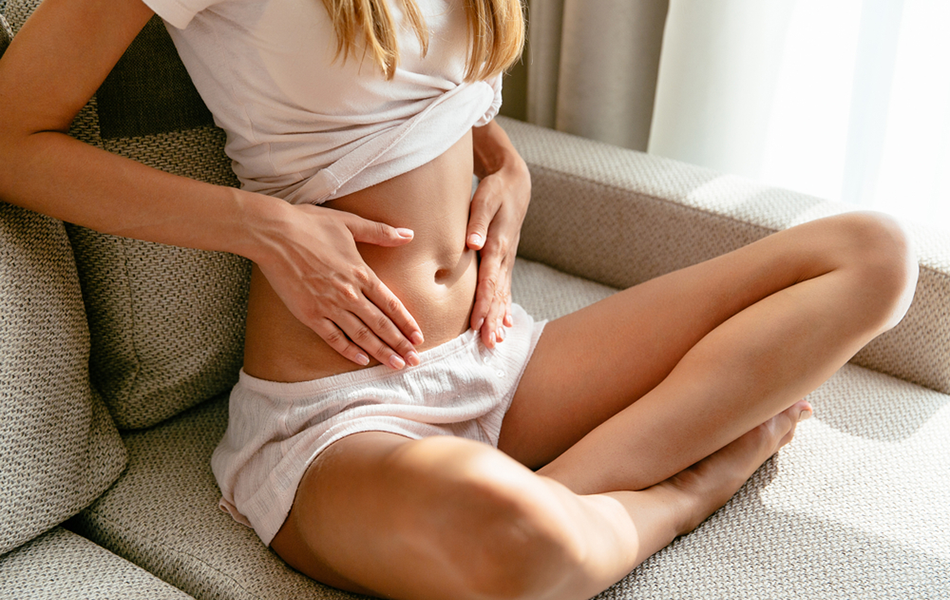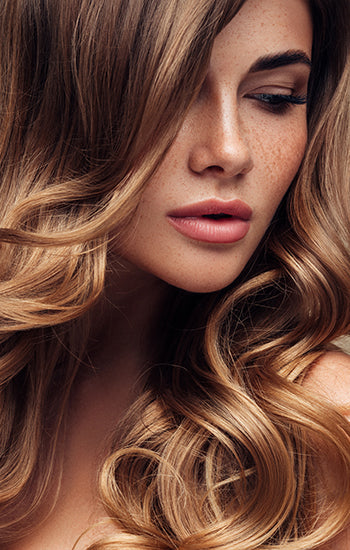January 15, 2022

Your pregnancy is confirmed and thoughts turn to your unborn baby. How can you give your child the best and protect from the worst. Self care is high on the list and, understanding how some regular habits may impact the foetus, you start to care more about what goes in and on your body.
How will your hair change during this hormone roller coaster? How can you best look after it? Here at the Michael Van Clarke Salon, I can talk from the experience of thousands of client pregnancies across a forty-year career and also the pregnancies that delivered our own six children into the world. We’ve helped generations of women better understand the changes pregnancy brings to their hair, and to help them look their best through and after childbirth.
 Non-toxin living
Non-toxin livingWe live in a modern toxic world. Pollutants are everywhere and eliminating them all from our lives is impossible, even based on what we know. The landscape is constantly changing as we understand more about the effects and consequences of the materials and substances around us. Perfection isn’t possible in this ongoing process and as living like a nun’s no fun, we can only do our best.
But more knowledge affords better choices. So when you want to let rip a little, you can do it consciously from a foundation of healthier habits.
 Product ingredients
Product ingredientsIn the cosmetics industry, the EU is the benchmark for product safety and the 3’’’More Inches haircare range complies with all EU guidelines, using mostly naturally derived ingredients. We are constantly working to create cleaner more effective formulas that deliver the very best in Healthcare for Hair® and I don’t believe that process will ever end. We avoid silicones, phthalates, parabens and xenoestrogens.
Other jurisdictions have less regulatory oversight for what you put on your hair and skin.
“It’s the economy stupid!” was Bill Clinton’s realisation that helped him direct his campaign to win the presidency. In America, manufacturing and economics still seem to come before consumer health.
 By example, Europe has banned or restricted the use of over 1300 chemicals used in cosmetics, the more relaxed US just 11. In America you can still find formaldehyde (a known carcinogen) in hair straightening treatments and nail polish, parabens (an endocrine disruptor that interferes with fertility) in widespread use. Even asbestos is still not banned, following manufacturer lobbying, and has even turned up in make-up. US legislation is a closer match to the EU on new chemicals coming to market but it ignores the thousands of toxins already in use.
By example, Europe has banned or restricted the use of over 1300 chemicals used in cosmetics, the more relaxed US just 11. In America you can still find formaldehyde (a known carcinogen) in hair straightening treatments and nail polish, parabens (an endocrine disruptor that interferes with fertility) in widespread use. Even asbestos is still not banned, following manufacturer lobbying, and has even turned up in make-up. US legislation is a closer match to the EU on new chemicals coming to market but it ignores the thousands of toxins already in use.
But there are lots of new companies springing up to offer more considered products. At the moment these are more niche and it’s likely to take some time before mainstream pressure forces bigger companies to change. For now, caveat emptor or buyer beware.
 Colouring methods
Colouring methodsHair tints are at the stronger end of cosmetic ingredients. They have improved massively over the last few decades and the manufacturers say they are perfectly safe. I have clients in their nineties who have coloured their hair all their lives. But products applied to the skin are more susceptible to some degree of absorption and no one knows 100% for sure what all the consequential effects are. So for pregnancy I recommend clients who have full head tinting or overall toners, change to foil lowlights and/or highlights or vegetable colours.
 This means the colour doesn’t get to touch the scalp and is held in foil on the dead hair; once out of the scalp, hair is no longer connected to the metabolism. It may be that a vegetable colour alone is enough or combined with lights. Vegetable colours are mild and do not change the structure of the hair shaft. They don’t last as long or have the same range of coverage but are very easy to reapply.
This means the colour doesn’t get to touch the scalp and is held in foil on the dead hair; once out of the scalp, hair is no longer connected to the metabolism. It may be that a vegetable colour alone is enough or combined with lights. Vegetable colours are mild and do not change the structure of the hair shaft. They don’t last as long or have the same range of coverage but are very easy to reapply.
 During pregnancy
During pregnancyMost women will notice their hair becoming fuller, shinier and more vibrant. This is thanks to various surges in oestrogen and other pregnancy hormones. Blood volume also rises during pregnancy by as much as 50% which helps keep the scalp nourished.
In the normal hair growth cycle, 50-100 hairs are lost every day. If you’re conscious and worried about it, this may seem scary as you hunt through your brushes and shower tray, but it’s normal. Generally, around 80-90% of your hair is in the growth phase of its life cycle (Anagen), but the hormonal changes during pregnancy hold more hairs in the growth or resting phase of the cycle (Catagen). As a result, most women enjoy thicker hair during pregnancy, because the shedding part of the cycle (Telogen) is delayed.
 Post Pregnancy Hair
Post Pregnancy Hair Immediately after childbirth, several of your hormone levels drop quickly, including oestrogen and progesterone. Those hormones will be almost back to normal levels within 24 hours after birth. Your blood volume also decreases gradually back to normal within a few weeks.
Immediately after childbirth, several of your hormone levels drop quickly, including oestrogen and progesterone. Those hormones will be almost back to normal levels within 24 hours after birth. Your blood volume also decreases gradually back to normal within a few weeks.
Postpartum hair loss affects most women to some degree but can be quite alarming for some. Following childbirth a larger number of hairs than normal enter the resting phase which is followed by hair shedding (and regrowth), so new mothers will experience greater than normal hair loss once the resting phase ends. It’s a temporary phase and isn’t related to breastfeeding.
The hair loss usually starts at around three months after birth. This corresponds to the length of the resting phase of hair growth (between 1 and 5 months). The hair loss can seem more extreme if your hair grew much thicker during pregnancy, or if you have long hair. The normal hair growth cycle usually returns 6 to 12 months after birth.
If you feel that your hair loss is more than normal or if persists beyond 12 months, then see your doctor. Excessive hair loss can be caused by common postpartum conditions such as iron-deficiency anaemia and are easily treated.
Hair will fall out from all areas of your head, but many women may only notice hair loss around their hairline, particularly above the temples, resulting in the appearance of very fine hair in the front. The effects can be lessened by following our tips below.
 The Hair Growth Cycle
The Hair Growth Cycle All hair has a life cycle. The 3 distinct phases are:
All hair has a life cycle. The 3 distinct phases are:Anagen: 2-8 years
This is the active growth phase when the root is dividing rapidly to add to the hairshaft and hair grows at approximately a half inch each month. This rate is surprisingly consistent across ages and hair types.
Catagen: 2-3 weeks
This is a short transition stage at the end of the Anagen phase where the hair is signalled to stop growing. In this stage, the hair shaft grows upward, forms a club hair and detaches itself from the bulb. This cuts the hair off from its blood supply and from the cells that produce new hair. Once completely formed the follicle moves into the Telogen phase.
Telogen: 1-5 months
This is the resting phase of the hair follicle. During telogen, the resting hair stays in place until pushed out by growth of a new hair. When the body is subjected to extreme stress or shock, up to 70 percent of hair can prematurely enter the telogen phase and begin to fall, causing a noticeable loss of hair.
For eyebrows and lashes the cycle is completed in around 4 months, while it takes the scalp 2-8 years to finish. Eyebrow hairs will grow much shorter because the cycle repeats more quickly compared to scalp hair.

 1. Eat well
1. Eat well
Include a variety of healthy proteins, fruits and vegetables in your diet to make sure your body is getting all the nutrients it needs. Foods that also help healthy hair growth include; fish, eggs, sweet potatoes, carrots, spinach, beans, asparagus, walnuts, sunflower seeds, and blueberries.
2. Get a good haircut
This will make styling much easier. Adjusting the shape can make up for less hair. If a lot of hair has been lost around the hairline an A-Line haircut may exaggerate this. Graduation or even a fringe may be a better solution.
3. Go easy on the styling
If your styling routine is a little on the harsh side this may be a good time to go gentle. Speak to your hairdresser about better techniques that use sensitivity with precision. Usually, less is more. Take more care with any heat styling. See blog on Home Blowdry Tips
Aggressive brushing can also accelerate the thinning and breakage. Use our No.1 Brush by 3’’’More Inches as this is the professionals first choice for gentle detangling and styling.
4. Use the best products
Our 3’’’More Inches LifeSaver Pre-wash Treatment, is the hero treatment for everyone, at all times. But especially when hair is thinner and more fragile this hypoallergenic formula will plump up the volume and give protection shine and flexibility.

3’’’More Inches Cashmere Protein Shampoos & Conditioners will all boost hair health. The 3’’’More Inches Volumising range will add body to finer softer hair types and the 3’’’More Inches Moisturising range helps smooth and control thicker, coarser or chemically treated hair. 3’’’More Inches UV Protective suits all hair types and also helps limit colour fade.

5. Take your vitamins
Vitamin supplements shouldn’t be a substitute for a varied diet, but can help those with an unbalanced regime. Vitamins and minerals are vital for overall health. Biotin is especially important to keep the hair healthy post pregnancy because it functions in the synthesis of hair proteins like keratin.
Lack of biotin has also been associated with hair breakage, hair loss, and brittle nails. 3’’’More Inches PowerShot Nutrients has an award-winning advanced formula of essential vitamins and minerals to support general wellbeing with an emphasis on brighter, stronger, healthy hair and nails. It’s especially suited to vegans as it also provides significant levels of iron and Vitamin B12.

March 24, 2023
March 20, 2023
March 20, 2023
How many Bobs have you got?
These quick clunky haircuts are becoming prolific as hairdressers become less and less able to layer hair properly. Emily had the very common 3-step Bob. The baseline, a step four inches off the bottom, and a sort of torn irregular piece suggestive of a long

Exclusive Offers Every Month
Sign up to our newsletter to receive 15% off your first order.